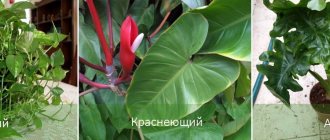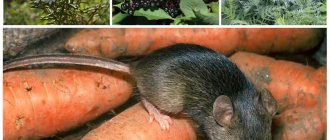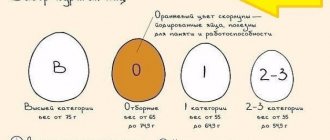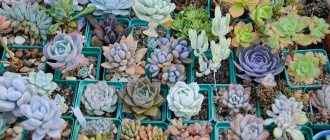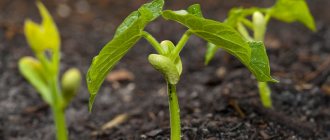Philodendron is an evergreen plant native to tropical regions of the world. This vine can be found in the jungles of Latin America and Australia.
The name has ancient Greek roots and literally translates as “tree-loving,” which indicates the peculiarity of the existence of philodendron in the wild: for normal growth and constant access to sunlight, it uses tree trunks as support.
There are many types of this vine, some of them are cultivated in botanical gardens and greenhouses, but philodendron is also popular as a houseplant due to its decorative appearance. This is an unpretentious flower that even a novice gardener can grow.
Description and photo
A decorative vine that perfectly purifies indoor air. Fast growing, shade tolerant. The stems of the flower are densely dotted with green, slightly wrinkled, heart-shaped leaves. Young philodendron leaves are thin, delicate, and bronze in color.
Over time, the leaf blade darkens, acquiring a rich green color. The leaf size can reach 10-15 cm in length and about 8-10 cm in width. The stem of the plant is equipped with clinging aerial roots.
Types and varieties of philodendrons, the most common in indoor floriculture
Philodendron bipinnatifidum is perhaps the largest and most ornamental of the home-grown philodendrons, the tree philodendron. This botanical name was registered in 1832, and in 1852 it was described as Philodendron selloum and is often marketed under this name. It grows in Bolivia, Argentina, Brazil and Paraguay, belongs to the subgenus Meconostigma, or woody philodendrons. In nature, this is a semi-epiphytic species, begins its life on the ground, forms a trunk, which for some time can grow in an inclined position and is supported by aerial roots. However, with further growth in the absence of support, it falls from its own gravity and grows spread out on the ground until it meets a vertical support. Along it, it rapidly begins to grow upward, can rise up to 30 meters, and at a height it forms a trunk with a cap of huge leaves, reaching 6 meters in diameter. When flowering, it reveals white-green blankets.
|
|
Philodendron bipinnate is very photophilous and can grow in direct sun, but prefers very bright, diffused light. It loves very porous, organic-rich soil that always remains slightly moist, but tolerates short periods of drying out and can tolerate very poor soils.
Philodendron bipinnatifidum goes on sale with small, slightly dissected leaves, which, under favorable conditions, are quickly replaced by huge and feathery ones. The emerging trunk is very decorative; over time, the old leaves die off, and light traces remain in their place.
At home it is very unpretentious, tolerates a lack of light, quickly forms a beautiful trunk and begins to produce large, although not the same dissected leaves as in nature. Aerial roots sense water well, in search of which they can travel several meters, for example, in the direction of an aquarium. Prefers very light soil. Due to its compact thick trunk, it is difficult to propagate by cuttings, but it can produce side shoots (babies). Rarely blooms at home.
Philodendron xanadu is another species of philodendron that belongs to the tree philodendron family. For quite a long time it was believed that F. Xanadu came from the rainforests of Australia, but its true homeland is Brazil. In the literature, there is sometimes a mention of F. Xanadu as a hybrid or variety of F. bipinnatifidum, but this is not true, it is an independent species.
Philodendron Xanadu is a terrestrial species, in favorable humid tropical conditions it can form a dissected leaf blade up to 1.5 meters; during flowering, they form red-violet blankets.
Currently, this philodendron is widely grown by tissue culture; young specimens with elongated, medium-sized leaves with shallow lobes, or adult specimens with large (up to 40 cm) rounded and strongly lobed leaves and a beautiful trunk are sold.
|
|
|
At home, Philodendron Xanadu is unpretentious and tolerates a lack of light, low air humidity, and short drying of the substrate. But, like any philodendron, it forms beautiful adult leaves only in good light, with properly composed soil and regular watering. Rarely blooms at home.
Philodendron hederaceum was described in 1829 and is often sold as Philodendron scandens or as Philodendron micans. This is another very popular home grown philodendron. Widely distributed in Mexico, Central and South America, and the Caribbean islands. In nature, F. ivy grows as a semi-epiphyte, starting its life on the ground, then, like an ascending vine, climbs up a tree trunk and often loses contact with the soil over time.
At home it is grown in a light substrate. The species is very variable depending on growing conditions. Juvenile (imperfect) leaves have velvety pubescence and often a reddish color on the underside; with vertical growth, the pubescence and red color disappear. And if the vine is not allowed to grow upward, then the leaves remain juvenile.
In a tropical forest, a leaf can reach 50 cm; at home, the leaf size is usually much more modest. The leaf blade can be heart-shaped or elongated, leathery, glossy and velvety, green or tinged with red, large or small, and all these variations depend on the growing conditions and age of the plant.
|
|
Often different forms of this species are found in collections under their own names and grown as separate species. Philodendron Brazil on sale with characteristic stripes of yellow and various shades of green on the leaves. This is not a separate species, but a natural mutation of Philodendron ivy. As the plant grows, it loses the variegation of its juvenile leaves and becomes completely green.
Philodendron ivy blooms with inflorescences with spathes ranging from green to purple, only after reaching a significant height (and the length of the vine), so it does not bloom at home. Due to the similar shape of the leaves, it is sometimes confused with heart-shaped philodendron (Philodendron cordatum).
At home, it is a very unpretentious species and is often grown as an hanging plant. With this method of cultivation, the plant remains at the juvenile level and produces rather modest-sized leaves, often velvety and with a copper tint. This plant can be used for vertical gardening indoors by providing a damp vertical wall.
Philodendron elegans, or as it is often called Philodendron skeleton, described in 1913, is native to Colombia and Brazil. In the literature, its incorrect name is often found: F. narrowly dissected (P. angustisectum). F. graceful attracts attention with its deeply cut leaves in the shape of a skeleton key; it is often confused with the similar leaf shape of Philodendron radiatum. Its leaf can reach 50 cm, its stem is liana-shaped, with internodes up to 15 cm long. Juvenile and adult leaves are similar in shape and differ in the depth of their rugosity and size. F. graceful usually produces two inflorescences in the leaf axil, the spathe is green on the outside and burgundy on the inside. Does not bloom at home.
To see all the beauty of this plant, you need to give it the opportunity to grow as tall as possible. Under natural conditions it is an epiphyte; it is grown at home in a light substrate and is unpretentious.
Philodendron erubescens is native to Costa Rica, Colombia and Brazil. Its name very accurately conveys its appearance; leaves, petioles and spathes can turn red. The species was described in 1854. This is a climbing vine, in nature it can rise more than 15 meters. The leaf blades are simple elongated, pointed at the tip, up to 40 cm long, the upper side of the leaf is glossy and green, the lower side often has a reddish tint. F. reddened, unlike many other species, prefers some shading.
|
|
Several varieties of Philodendron blushing are available for sale. All varieties are unpretentious in indoor conditions, frequent spraying is desirable, otherwise care is general for philodendrons.
- Red Emerald variety (P. erubescens Red Emerald) is close to the wild species and is characterized by more compact growth. The leaf blade is about 25 cm, leaf petioles and young shoots are colored red.
- The Burgundy variety (P. erubescens Burgundy) has a more pronounced dark red (wine) color; not only young shoots and leaf petioles are colored, but also the leaf blades themselves. The leaves of this variety contain less chlorophyll, so it prefers bright, indirect light.
- Medusa variety (P. erubescens Medusa) is characterized by an unusual yellow leaf blade that contrasts with red petioles and stems. Its habit is similar to other varieties of F. reddened. More demanding on lighting.
- The Mandainum variety (Philodendron x mandaianum) is an interspecific hybrid, externally similar to previous varieties, the young leaf has a red tone, with age the leaf becomes green.
Arrowhead Philodendron (Philodendron sagittifolium) was first described in 1849 and is sometimes incorrectly called P. x mandaianum. Grows in most countries of Central America. In nature it is a semi-epiphytic vine, sometimes growing as an epiphyte on trees or as an epilithic species on stones. The leaf blades are oval or triangular-ovate, leathery, semi-glossy, can reach 70 cm in length, petioles can reach 90 cm. The species is very variable.
Philodendron squamiferum was described in 1845. Grows in Central America. In nature it grows as a climbing epiphytic vine; it can rarely be found on the ground. At home it is grown in a light substrate. Juvenile leaves are simple in shape, elongated; as the vine matures, the leaves gradually become more complex, the number of lobes and their depth increase. An adult leaf has five heavily cut lobes, unequal in size; the length of the leaf can reach 45 cm. The petioles of the leaves are bright red and covered with bristles. The bedspread is white and burgundy on top, white inside.
Philodendron guttiferum, described in 1841, native to South America. It grows as a semi-epiphyte, the leaves are oblong with a sharp tip. On a creeping vine, the leaves are smaller, only 14 cm long; with vertical growth, the leaves reach 25 cm. Petioles are 5-18 cm, winged. Internodes from 2 to 15 cm.
Cobra is more often found on sale . The variety is more demanding of light compared to the wild species; high air humidity is desirable; otherwise, care is common for philodendrons.
|
|
|
Philodendron domesticum, which is often found in the literature, is not actually described scientifically as a species and this name is purely commercial. Most likely, several species or hybrid forms of philodendrons are sold under this name. Sometimes this name is identified with the species Philodendron hastatum, which is scientifically incorrect; they are not synonyms.
Philodendron Goldi Lock , sometimes known as Lemon Lime. It grows as a very compact vine with short internodes. The leaf is 20-25 cm long and about 10 cm wide. The variety is distinguished by the yellow-light green color of its young leaves; as they age, they become light green. Intense light is required for bright coloring of young leaves. At home, a very unpretentious variety, tolerates low air humidity, care is common for philodendrons.
Philodendron Imperial Red forms a stem with very short internodes; large dark red leaves are collected in a rosette with a diameter of up to a meter. Young leaves have a more intense color. The variety is shade-tolerant, but with a lack of light it loses its color saturation. Tolerates dry indoor air, otherwise care is general for philodendrons. There is a green-leaved form - the Imperial Green .
Philodendron Imperial Green
Varieties
Brazil (p. Scandens Brazil)
The most common representative. The stem is equipped with wide heart-shaped leaves with pointed tips. The leaf blade is green with expressive yellow spots and stripes.
Important! With a lack of lighting, the plant stretches and the leaves become smaller.
Mikans (p. Scandens Micans)
The most unpretentious representative. A small, thin-trunked vine, suitable for indoor growing and vertical gardening.
Characteristic are velvety, dark green leaves with a burgundy tint, heart-shaped.
Name and its origin
The liana Philodendron erubescens (lat.) received its name due to the red color of the leaves, stems and petioles. As the plant develops and matures, the foliage acquires green shades, but the petioles still remain red.
According to the classification, philodendron belongs to the perennial evergreen vines of the Araceae family, which naturally grow in the tropical forests of Brazil, Colombia and Costa Rica, as well as Australia. This family has about 900 species (data from researchers at the Missouri Botanical Garden).
This species was first described in 1854. The literal translation of the name means “tree-lover,” which characterizes the habit of this plant to cling to tree trunks with its flexible, twisting stem in order to make its way upward to sunlight.
Peculiarities
Scandens is the most shade-tolerant type of philodendron. Low branching, climbing. However, it requires sunlight to develop. Has long and flexible shoots. The leaf plate is heart-shaped with a glossy sheen.
Bloom
Inflorescences can be seen when growing philodendron in a winter garden or greenhouse (it does not bloom at home).
The type of inflorescence is small cobs, wrapped in a blanket-hood. A play of color palettes from white to violet.
- Flowering time. Occurs in early spring or summer.
- Fetus. A berry, usually white, containing very small seeds inside.
Philodendron: is the plant suitable for the home?
Philodendron is one of the most popular indoor plants. The shape of leaves of different varieties and other appearance features provide high decorative potential. Many varieties, such as radiant or brilliant, are compact.
The largest species, those that have large leaves more than 50 centimeters in length (philodendron bipinnate) or those that grow high (more than a meter), are usually grown in greenhouses and botanical gardens.
However, if there are conditions at home for the growth of these plants, even they can become a beautiful decorative solution.
Landing
Choosing a pot
The size of the container should be slightly larger than the root system of the flower (radius about 10-12 cm). There must be a drainage hole and drainage.
A support corresponding to the length of the vine is installed in the center of the pot (the support should not be completely smooth).
The soil
The best option is fertile light soil for decorative deciduous crops. It is possible to use a universal soil mixture for potted plants. Scandens Micans can be grown using hydroponics.
Landing rules
The favorable period is the beginning or middle of spring.
- Drainage is placed at the bottom of the pot, soil is poured on top.
- The roots of the plant are completely covered with soil (they do not cover the growing point).
- Water the plant abundantly.
Air layering:
- pre-moisten the soil;
- layering in the soil, fixed with wire or pins;
With a cutting or a leaf with a “heel”:
Planting material is placed in cold water. After the roots appear, they are planted in the soil.
- placed in moist soil;
- create greenhouse conditions - cover with a cut-off plastic bottle with an open neck;
- after 2-3 weeks they are planted in separate permanent pots.
Reproduction
In a home or apartment, propagation of reddened philodendron is carried out vegetatively, for which stem or apical cuttings are used. The material is cut in March-April, trying to capture 2-3 internodes. For rooting, it is recommended to use damp moss, into which the cuttings are buried at an angle of 30-45°, covered with polyethylene on top. This will stabilize the high level of humidity; the temperature should be maintained at +25 °C. Rooting usually lasts 7-30 days.
Another method involves rooting the cuttings in a greenhouse, and then transplanting them into small pots when they grow steadily.
Another method of obtaining a new plant is to use a piece of stem with aerial roots, where it needs to be wrapped in film, in which damp moss is placed. The moss must be moistened periodically until a good root system is formed.
After the roots have formed, the stem is cut off at the bottom, and the plant is transplanted into a pot with prepared soil mixture along with moss.
Home care
Temperature
In summer the temperature in the room is not higher than 22-23°C, in winter – not lower than 15-16°C. Afraid of drafts.
Lighting
The flower loves bright, diffused light throughout the day, but can also grow in shade. Direct sunlight can cause leaf burns.
Grows well in artificial light. Prefers north-east or north-west windows.
Watering
Prefers moderate, gentle watering with settled water. The water from the pan is immediately drained.
In the autumn-winter period, watering is reduced, but the roots are monitored for drying out.
In summer, the plant is sprayed or wiped with a damp cloth.
Top dressing
Mineral or organic fertilizers are applied monthly - from early spring to early autumn. You can use complex fertilizers for decorative deciduous plants.
Trimming
Regular pruning of old shoots is necessary - this promotes luxurious growth of the plant. New shoots appear at the cutting site.
Transfer
Produced in late March - early April. Young plants are replanted every year, adults - once every 3-4 years. The size of the pot is 5-7 cm larger than the previous one. Use new drainage.
Handle the plant if the roots are strongly intertwined. Within 2 weeks, the plant must be sufficiently shaded and excessive watering should be avoided.
Flowering period
Philodendron Scandens does not bloom at home. The absence of flowering in the greenhouse indicates insufficiently comfortable conditions for keeping the plant.
Useful tips for growing
It is very important to monitor the level of soil and air moisture. Deviations in this regard, namely too dry air and an overdried soil ball, as well as excessively humid air and constantly wet soil, reduce the plant’s immunity, increase the risk of disease and create favorable conditions for the appearance and reproduction of pests.
Did you know? Inside the philodendron there is a milky juice containing rubber. In the plant's homeland, this toxic substance is used to stifle fish and also to seal blowguns.
Philodendron can decorate any room with its exotic grace. And caring for him is not at all difficult. Even a novice gardener can easily cope with this.
Diseases and pests
- Stem rot. The reason is excessive watering. Control measures: trim the trunk and re-root.
- Bacterial spotting. The reasons are increased humidity and ambient temperature. Control measures: removal of damaged areas. Fungicide treatment.
- Scale insects, thrips, mealybugs, spider mites. Control measures: treatment with soap solution, karbofos, acaricides.
Guitar philodendron (P. panduriforme)
As they mature, the leaves of many philodendron species undergo an amazing metamorphosis. From lanceolate or heart-shaped, they turn into feathery, finger-shaped or lobed. Philodendron guitarum is no exception.
This vine, which in nature grows up to 4–6 meters, is almost half that size when grown in pots. But at the same time he does not lose the ability to transform. And adult plants amaze with their bizarre three-lobed leaves, which reminded botanists of the appearance of the ancient Greek musical instrument, after which this type of philodendron was named.
Sometimes young Philodendron guitarum plants are confused with Philodendron bipinnate, but when these large indoor species mature, the difference between them becomes obvious even to a non-specialist.
History of Philodendron
In the period from 1932 to 1935 There was a bloody war between Bolivia and Paraguay. Covering the chronicles of these military events, journalists from all countries wrote about cannibal plants. So in their articles, reporters wrote that the remains of soldiers are regularly found under the same tree. Their bodies are drained of blood and covered with huge leaves.
The journalists' version said that in South America there is a certain tree whose flowers exude a hypnotic aroma that attracts people. People, intoxicated by the smell of the plant, go to it in fascination. Then the plant grabs the person and tightly entwines it with its foliage, with the help of which it sucks all the blood from its prey.
This scary monster from the jungle turned out to be Philodendron.
The reporters' tales of course attracted attention from the scientific world. However, research has completely refuted them.
Philodendrons form huge shady thickets in nature, close to a water source. Their flowers smell really nice to attract insects for pollination. But they have neither a poisonous nor a narcotic effect on people. And of course they do not feed on human blood.
And the wounded soldiers simply tried to hide from their enemies in the shade and coolness of the philodendron, dying from blood loss caused by numerous wounds.
However, this is not the first and not the last mention of Philodendron.
This plant has attracted the attention of the ancient peoples of South America for centuries; modern scientists never cease to study and experiment with the mysterious flower. It was loved by both florists and home gardeners for its variety of species and decorative foliage.
Difficulties in care
- The tips of the leaves darken and dry out - the humidity in the room is too low, insufficient watering, or the presence of drafts.
- Leaves wrinkle - insufficient watering or humidity.
- The leaves are elastic, but the tips darken - excessive watering, waterlogging of the earthen clod.
- Brown spots on the surface of the leaf plate are burns from direct sunlight.
- Leaves darken - kept at too low temperatures.
- The leaves are pale in color and become smaller - insufficient daylight.
- Pale leaves (not necessarily the presence of brown spots) - an excess of sunlight.
- The leaf plate curls down - the soil is oversaturated with fertilizers.
- If the upper leaves are pale and small, there is not enough feeding.
- Rotting of stems, darkening of leaves - heavy substrate, waterlogging, or low temperature.
- The appearance of drops on the surface means the plant is crying. This is a natural process when kept in a room with high humidity, or before rain. In the natural habitat, this occurs at night, when the temperature drops and the humidity remains high. This process is called guttation.
These are the main difficulties that most amateur gardeners face. Let your vine always grow healthy and delight others with its presence.
Philodendron bipinnate or Sello (P. bipinnatifidum)
This variety has many names and serves as an excellent illustration of the decades-long confusion in the classification of philodendrons. Most often, flower growers know the plant under the names double-pinnate, Sello or bipinnate.
If the name Philodendron Sello is given in honor of the famous flora researcher and naturalist, then other names are a tribute to the unusual shape of intricately cut multi-lobed leaves, reaching a length of 40–70 cm.
It is interesting that very young Sello philodendrons, like other varieties, have solid, pointed heart-shaped leaves. In addition, Philodendron bipinnate is a rare variety that has long been used on the farm.
Indigenous people use aerial roots to make homemade ropes. The leaves and petioles produce what the residents believe is healing juice.
Botanists who studied the Sello philodendron noticed that during flowering the temperature around the anthers inexplicably increased by almost 13 ° C. As a result of this phenomenon, the sweetish-honey smell sharply intensifies, which literally attracts pollinating insects to the plant. The juicy berries of Philodendron bipinnate, ripening in place of faded cobs, are edible.
Reviews from flower growers
One feature captivates me - when the leaves fall and expose the trunk, a white spot with a dot remains in their place and it definitely resembles a human eye. This is such a handy-eyed plant)) and even with antennae)))…
He needs a rather heavy pot, because his root system is undeveloped - single-stemmed - and the upper part can easily pull the bottom and overturn the entire pot. So I gave up plastic ones a long time ago.
keygen
https://otzovik.com/review_476964.html
This handsome guy came to me as a shoot. A very unpretentious flower, as it turned out. Lacking a free pot, I buried it next to an adult monstera, and now they are competing to see who can grow taller. Philodendron successfully covers its aerial roots and the exposed trunk with age. I propagate it from the tops, which causes the main plant to branch, and not just grow upwards. It loves spraying, it is advisable not to place it near heating devices, otherwise the leaves will begin to dry from the edges, and this is immediately noticeable. After all, philodendron is valued not only for its unpretentiousness, but also for its decorative qualities. I recommend it to beginning flower growers. It will not cause you any trouble, but will delight you with its appearance.
Svetka-1502
https://spasibovsem.ru/responses/krasavets-filodendron.html
Philodendron is an unpretentious plant that mainly loves well-lit places; it should not be watered abundantly, but it should not be allowed to dry out the soil. Its design can be varied - you can let it trail along the wall, you can arrange the leaves around a special stick.
Love ( [email protected] )
https://home-flowers.ru/plant183.html
Philodendron ivy (P. hederaceum)
One of the smallest-leaved, miniature and most popular species of philodendron among gardeners, it can also be considered the most ambiguous. Philodendron ivy at different times, and sometimes even today, is called climbing philodendron, brilliant philodendron, clinging or pointed. No other variety can boast of such a wide range of names. However, the plant does not lack human love!
A liana with wide-heart-shaped pointed leaves sitting on long flexible petioles is a favorite indoor plant. In terms of popularity, the plant competes with the similar scindapsus (photo).
In nature, there are specimens with smooth, dark green foliage that can withstand deep shade well. Today, lovers of indoor floriculture have at their disposal not only varieties with marbled lemon and white spots. A variety of Philodendron brilliant has been developed with completely yellow leaves.

